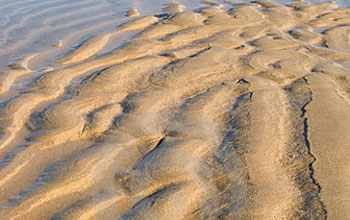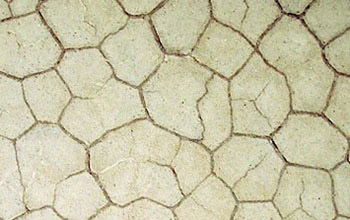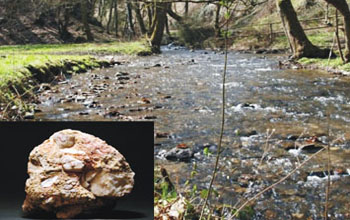A conglomerate is a clastic sedimentary rock that formed from coarse sediments of rounded pebbles typically deposited in stream environments. At present we observe that the rounded pebbles are a product of intensive abrasion during prolonged transportation in water.
See also: Sedimentary Rocks |
A 2700 million year old conglomerate from Witwatersrand, South Africa, with rounded pebbles gives evidence that water and streams were already present on the early Earth surface during Archean time.
See also: Archean - The Earliest Atmosphere and Hydrosphere |



